COLLECTION MANAGEMENT
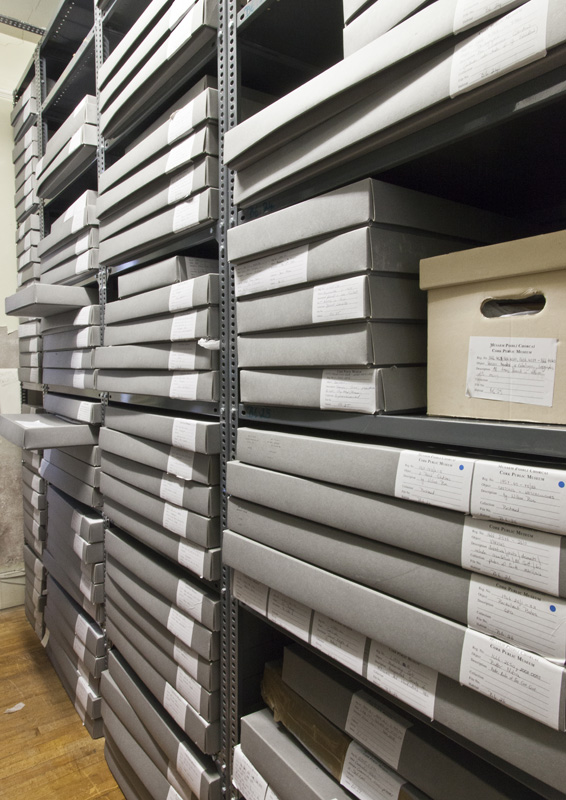
(Above) main storage for prints, photographs and drawings at CPM.
Modern Collections Management is an integrated approach to developing and caring for collections that helps the creation of information about the collections and enables the public to access, use and learn from them.
A good Collections Management approach should be holistic and aims to bring together different areas of museum operations that were traditionally separate, such as conservation, marketing, education and information management. These disciplines are more effective working together to fulfil the museum’s strategic goals, rather than alone or in competition.
At Cork Public Museum (CPM), we are striving to implement a Collections Management process that focuses all aspects of what we do here, from cataloguing to digitisation, on the central goal of better understanding our collections. This ensures we are better positioned to bring the many stories, insights and significant information about our collections to the public through our exhibitions, events, outreach and educational programmes, as well as online, on our website and social media platforms.
The standards mechanism presently followed by CPM is the Museum Standards Programme for Ireland (MSPI). The Heritage Council established it in 2007 to promote professional standards in Irish Museums and Galleries. Participants are expected to achieve accreditation (interim and full) by meeting 37 standards in museum administration, collection management and visitor services. The Heritage Council also provides funding and training to those in MSPI to improve and maintain standards.
CPM entered the programme in 2016 and achieved interim accreditation in 2019. The whole process has been extremely beneficial to the Museum in improving and updating our collection management practices. The MSPI programme has given us the tools to put in place policies, structures and procedures to better manage our collections, and improve our cataloguing and storage, which in turn increases our ability to make them more accessible to the public.
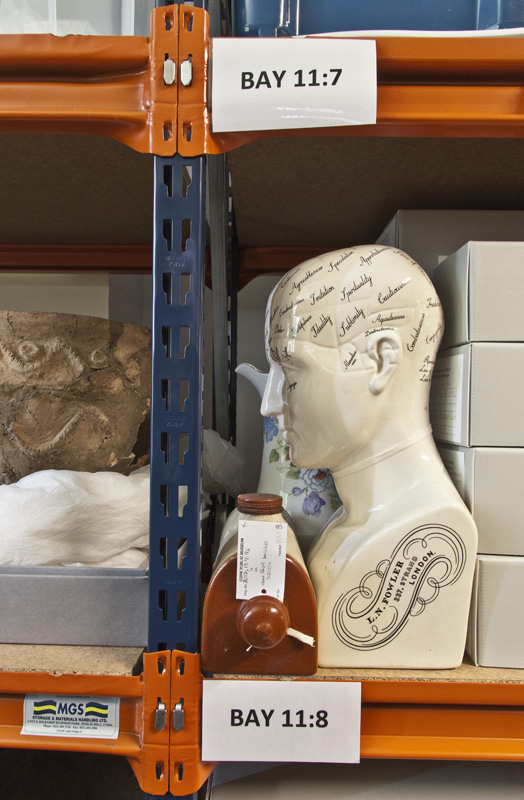
(Above) Part of Our Lady's Hospital collection at CPM. This is one of our newest collections acquired in 2018. It contains approx. 5,000 individual items.
For more information, please visit:
https://www.heritagecouncil.ie/projects/museum-standards-programme-for-ireland
In the following section, we will look at some aspects of Collection Management that need to be considered for every acquisition in our collection, cataloguing, storage and risk management/preventative conservation.
Why is cataloguing so important for museums. Simply put, no museum can possibly do its work without first knowing its collections. All objects accessioned into our collections are assigned a catalogue number and a location number. These very important identification markers remain with the object for the duration of its time at CPM. This allows us to keep track of all objects and reduce the risk of loss or theft. Other important data recorded about the objects include its provenance, its physical characteristics, its conservation status and other relevant data about who owned it or what important event it is associated with. In this process, we are trying, as far as possible, to get as full an understanding of every object in our collection.
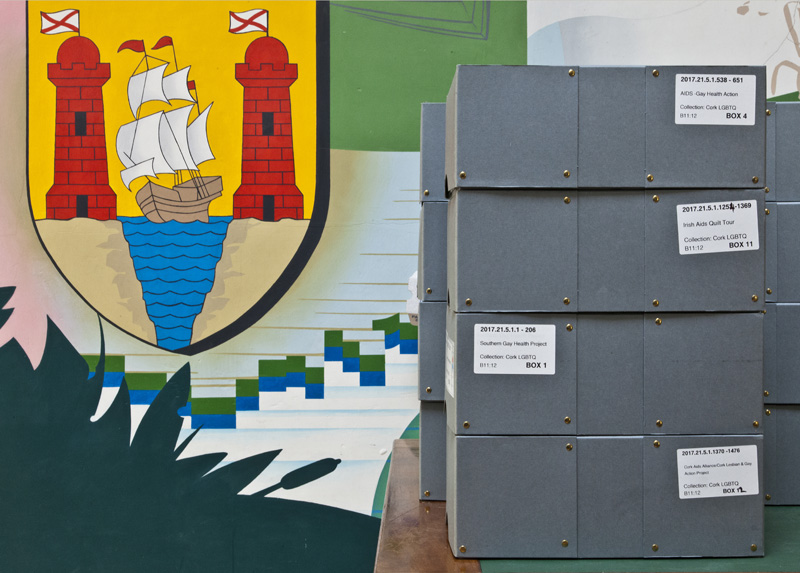
(Above) The Cork LGBT collection in the process of being catalogued
All this information is recorded on our digital database. Having an up-to-date and informative catalogue is an invaluable tool in helping museum staff answer queries from the public, plan digitisation projects or design our exhibitions or educational events. It also prevents unnecessary rummaging and handling of objects in our storerooms, reducing their exposure to potential handling or environmental risks. This is not a static database and is always updated when new information or research is made available. The collections at CPM are our greatest assets and the catalogue is an indispensible primary source without which many other aspects of museum operations would not be possible.
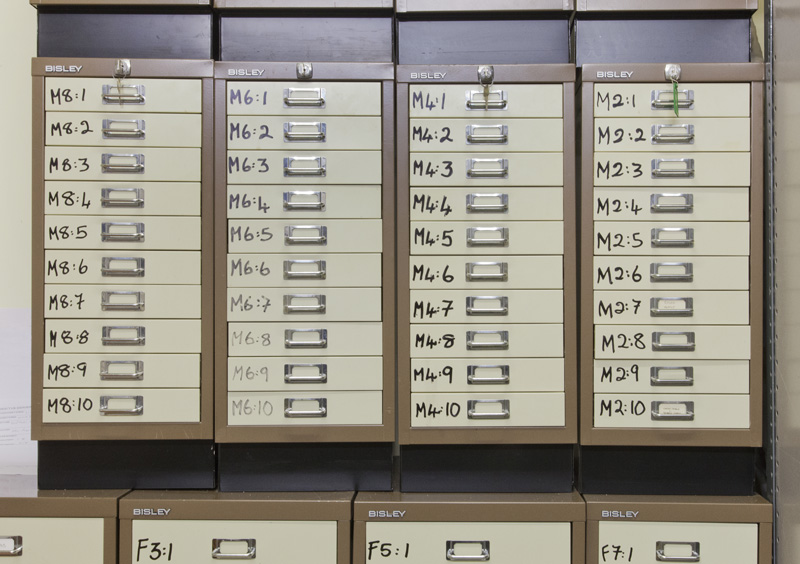
(Above) Storage of documents, medals, coins and small objects.
The majority of CPM’s collections are stored onsite but several offsite premises are used to house the larger and infrequently requested material. For museums like us, who have large collections, adequate storage is of paramount importance. When the majority of your collections are not on permanent display but in storage, the storerooms need to be safe, secure and ensure the continued preservation of the objects. Inadequate or sub-standard storage practices can cause long-term physical damage to museum objects and contribute to high costs in conservation treatment.
It is important that the environmental conditions of the storeroom(s) make it suitable to deposit collections in. Fluctuating temperatures or humidity, excessive natural light and pest/rodent infestations can all have a detrimental effect resulting in irreversible damage. Therefore, these conditions need to be frequently monitored and appropriate remedial actions taken to prevent or reduce their potential effects.
Storerooms should be laid out with suitable storage furniture such as shelving, presses, drawers or other types of storage units. These are typically made from galvanised steel, which are protected from corrosion and any potential ‘off-gassing’. All boxes and packaging material used to house objects or documents is acid-free, ensuring that there is no discolouration or ‘off-gassing’, which may affect objects’ appearance especially those in long-term storage. Storage containers should be stacked or stored correctly, care and consideration should be given to the physical characteristics of the object to determine its most suitable storage location.
Finally, all objects, whether they are stored in boxes, envelopes, costume bags or conservation folders, need to be properly labelled with its accession number and location details before being put in the storeroom. This prevents material getting lost or misplaced and helps to ensure an efficient retrieval and subsequent return when accessing the stored collections.
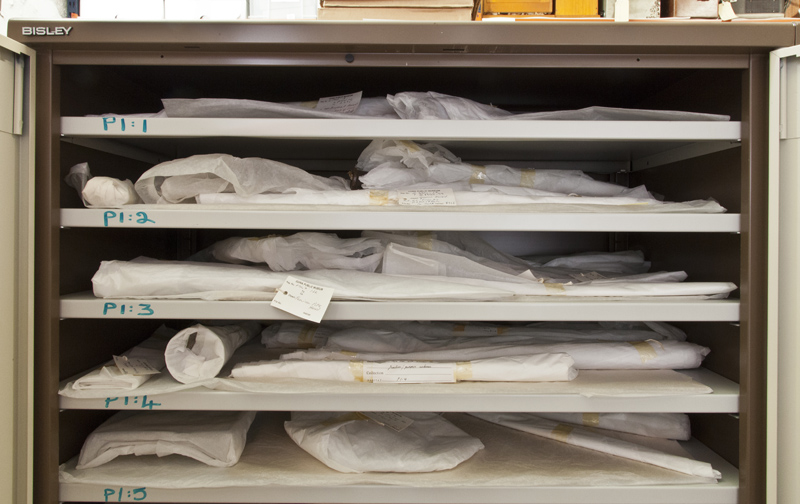
(Above) Storage cabinets containing small military objects.
What are the main risks to any museum collection?
Generally, there are nine categories of risk to consider for collections on display or in storage. These are:
1) Physical/handling accidents, 2) theft and vandalism, 3) fire, 4) water, 5) biological 6), chemical, 7) light, 8) wrong temperature, 9) wrong humidity.
Risk management is about balancing all these interconnected categories to minimise the impact of any potential disaster.
While the museum is susceptible to all the risks mentioned above, they can be reduced by implementing certain procedures. These include, but are not limited to, the following:
One of the biggest risks facing CPM is the threat of flooding. This derives from the fact that the Museum is situated very close to a river in an area historically prone to flooding. Cork City was badly flooded in 2009 and much damage was done to the Museum. Procedures have been implemented since then to mitigate against any future potential damage caused by flooding such as relocating all our store rooms to the first floor, removing all collections from the ground floor.

(Above) Part of the museum's zoological collection.
At CPM, we follow the five procedures in collections risk management: avoid, block, detect, respond, and recover/treat. It is not possible to fully protect against every conceivable risk but having procedures in place helps us to better protect our collections from potential damage and to implement recovery and treatment operations quicker and more efficiently.
Thanks to Jessica Hyland, Emily Karinol, Grace Dunlea and Sarah Murphy for their work and research in preparing this. They are students from the MA in Museum Studies course at UCC Archaeology Department who undertook this work as part of their remote placement here in early 2020